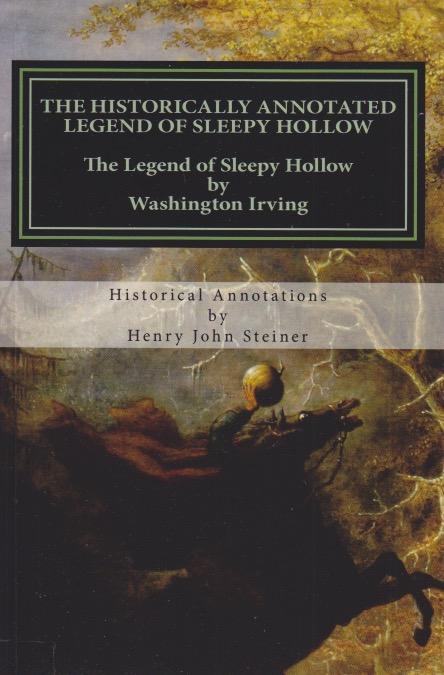
Really concentrating on a short story is sometimes difficult to do. I don’t have a degree in literature (I took a few courses, but my specialization was religion). I’ve been on a bit of a Sleepy Hollow kick lately and I wanted to move beyond just the short story by Washington Irving. Although I’m sure working through the entire Sketch Book of Geoffrey Crayon, Gent., the book in which “The Legend of Sleepy Hollow” was published, would probably be rewarding, it would also be time consuming. Irving was trying to find his way as a writer and this particular story has been his lasting contribution. So I turned to local historian Henry John Steiner’s annotated edition. It has a useful introduction, but still wouldn’t be “book length” without several pages of photos and a large font size.
Sleepy Hollow may lay claim to several signs of historical importance. It featured in the Revolutionary War. Washington Irving did eventually settle there. As a getaway it attracted the wealthy and powerful from New York City because it’s not that far from Manhattan. Several movie and television renditions have been made of Irving’s story. This book generally provides local place connections in the annotations. A visitor to Sleepy Hollow might wonder where this or that event in the story was set. This book will help with that. Still, it left me looking for a bit more substantial treatment. Not necessarily a literary-theory kind. Let’s face it, academic writers tend to write for other academics. No, a bit more of the folklore, I suppose.
It did allow me to slow down and really concentrate on the story. Books have an endpoint that really helps in that regard. This little book (as was the one I recently read on the Old Dutch Church) was published when the Fox series Sleepy Hollow was taking off. That all-important media tie-in helps to sell books. Interestingly, the details of a closer reading are revealing. This isn’t, in origin, a Halloween story. It’s a tall tale told American style. Steiner indicates it was based on an older legend—this is something I’d be interested in hearing more about. Writers are great recyclers. I suppose a book on the folklore of the lower Hudson Valley might have more of what I’m seeking. Nevertheless I came away from this edition feeling as if I’d gotten to know the story better. Irving’s “Rip Van Winkle” also appears in his Sketch Book, but perhaps it’s asking too much to have both analyzed together.
